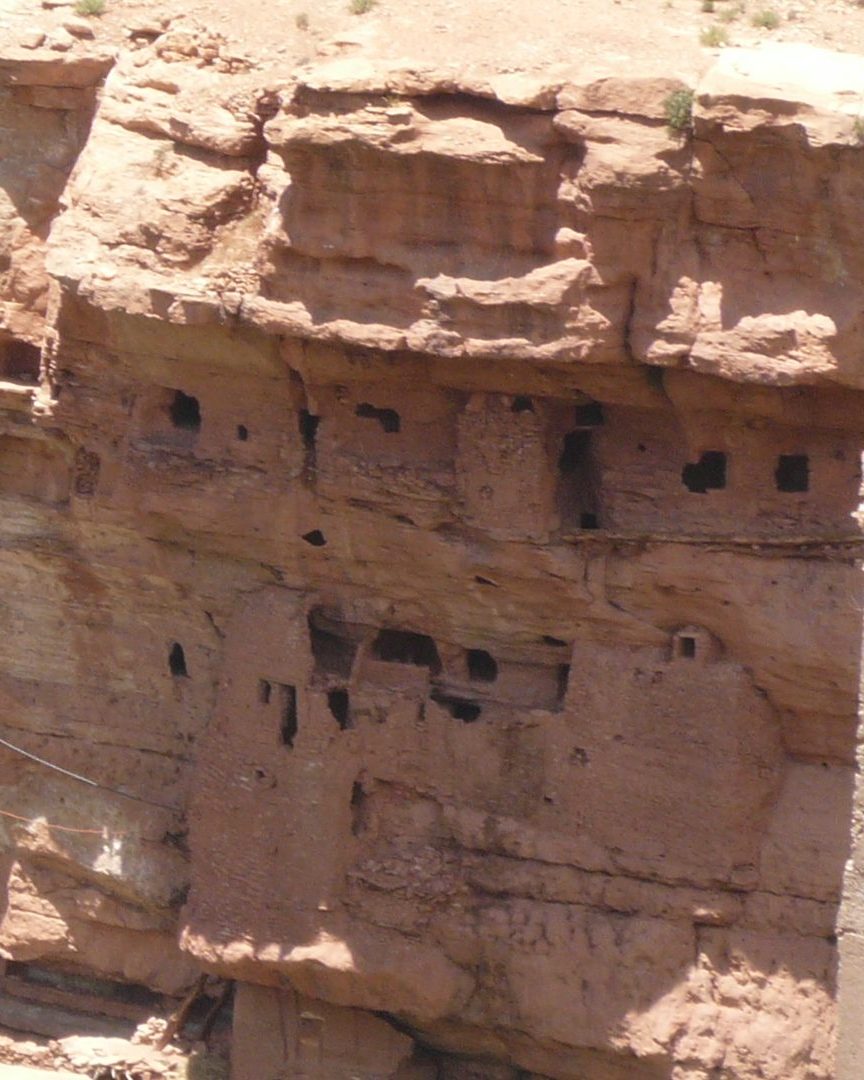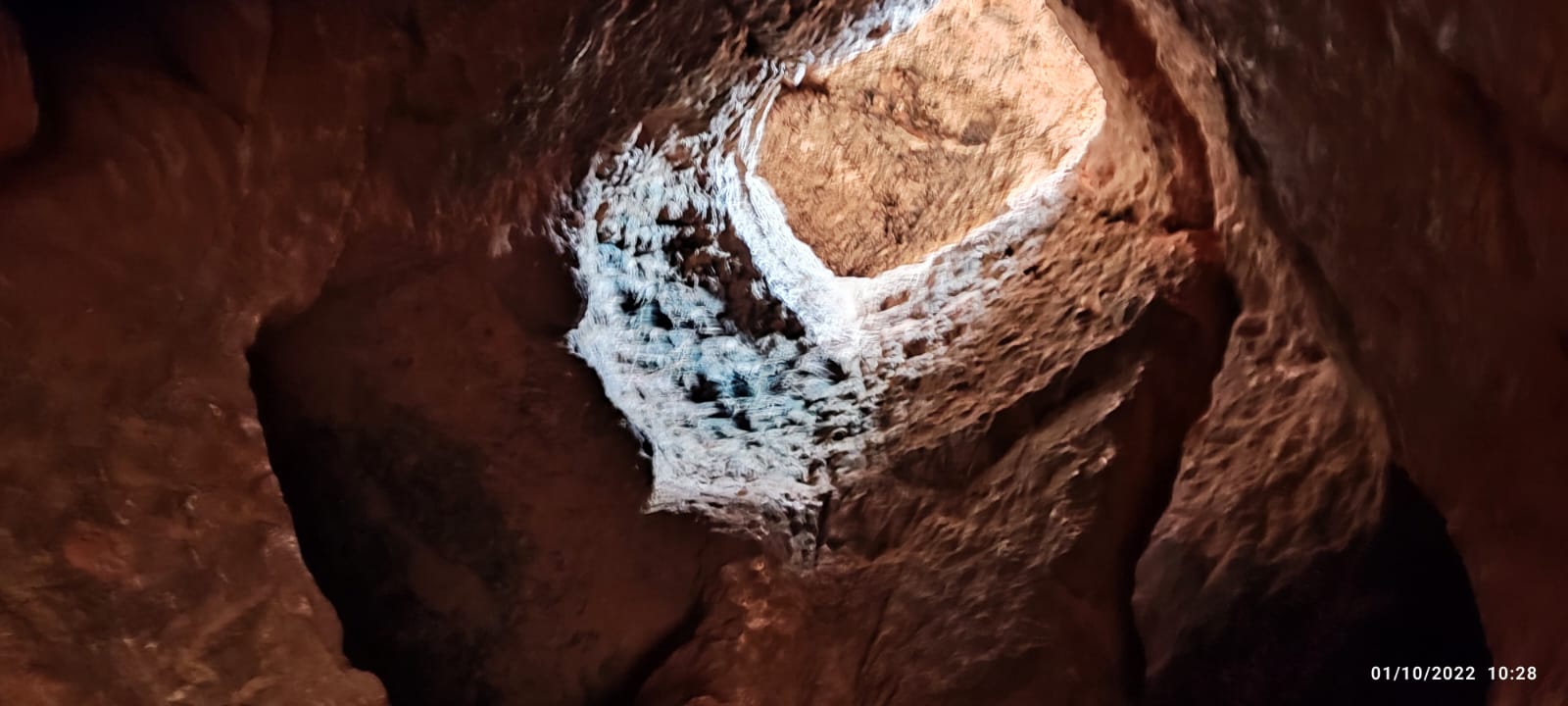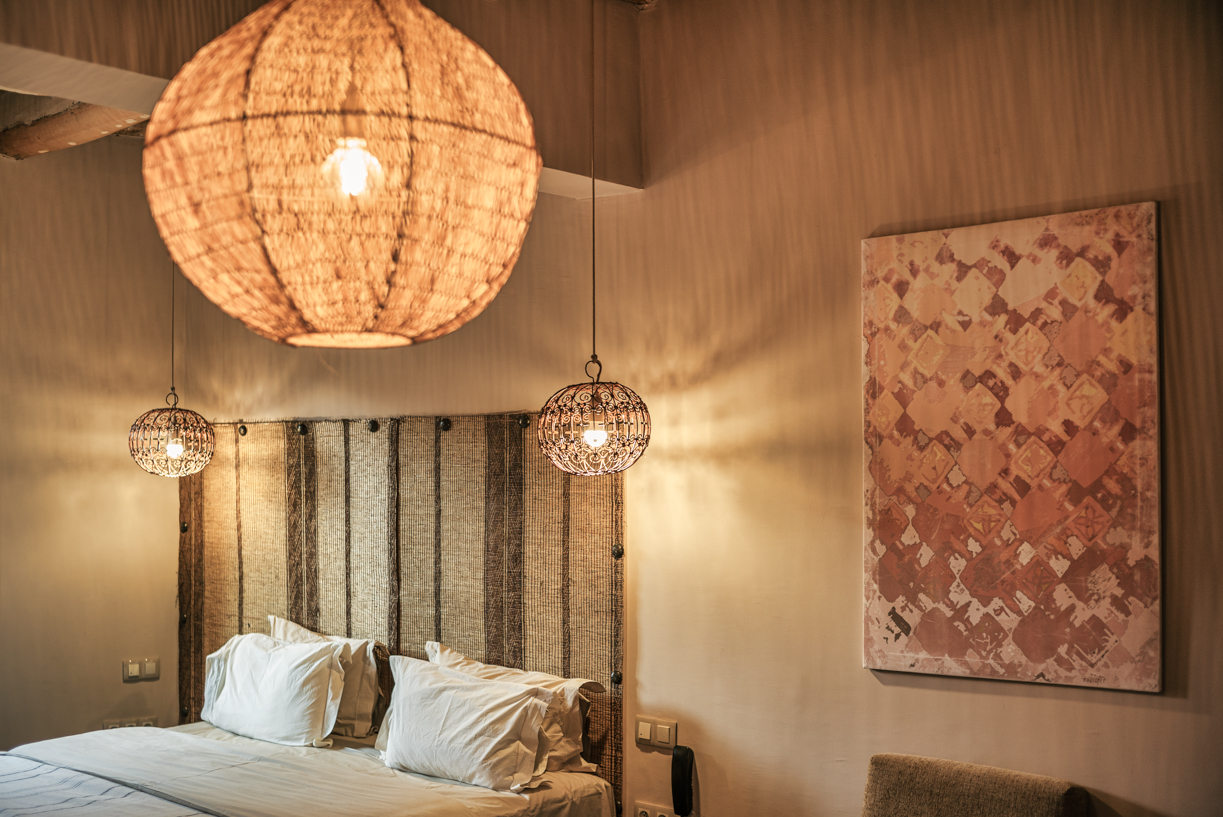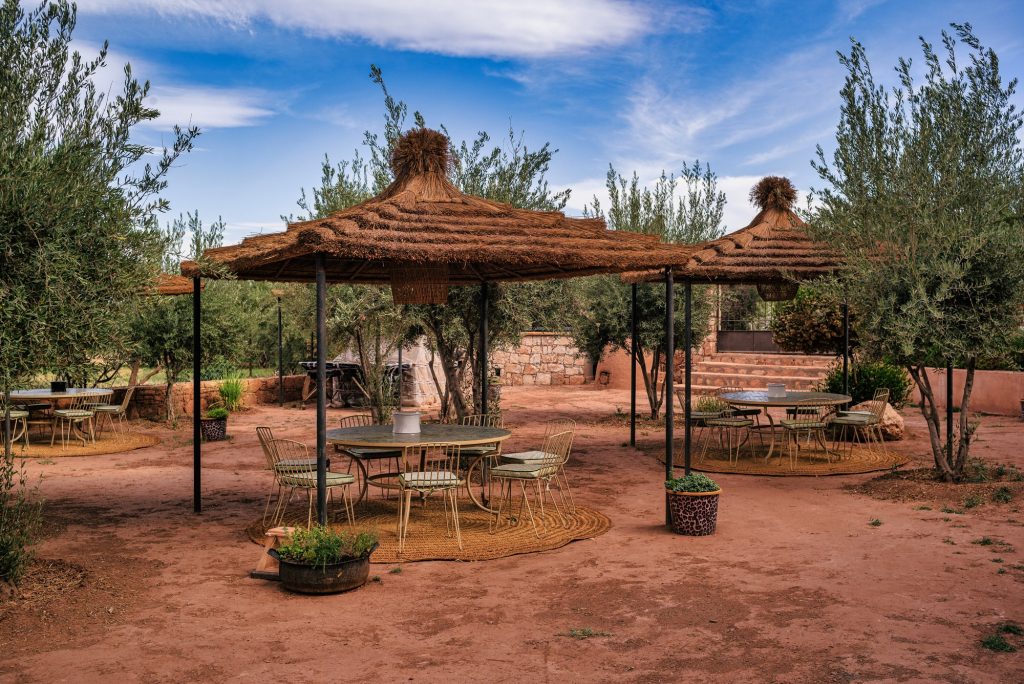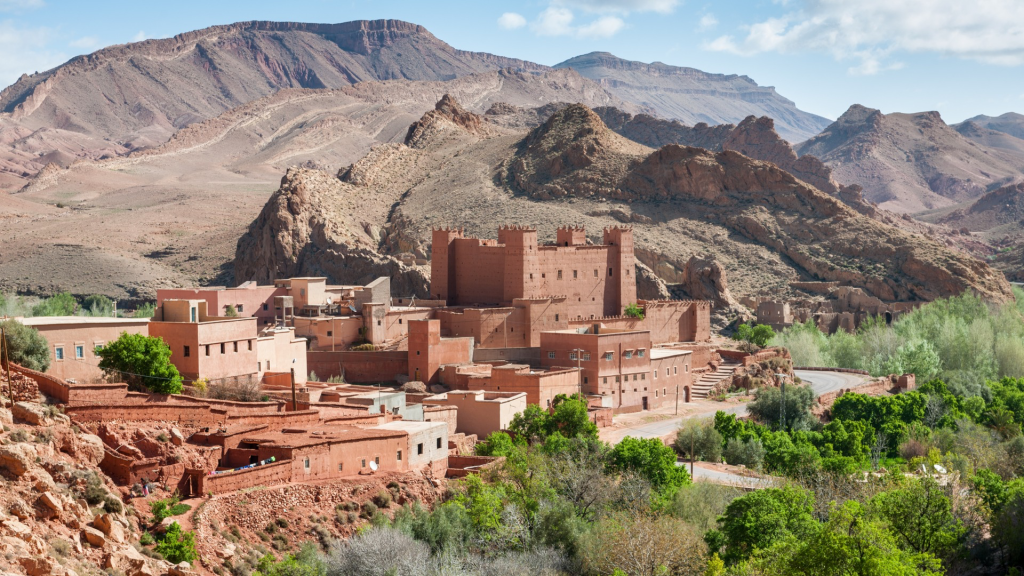A few kilometres from the Ksar Ighnda, you can visit the first dwellings of the people of the Ounila valley.
These cavesdating from the 4th century, were first occupied by the Amazigh, then by the Volubilis and, later, by the Banu Hilal in 1270. Today, they have become a major tourist attraction, drawing visitors from all over the world.
Cave dwellings have been used for centuries, particularly by the Berbers. These nomadic communities adapted to their environment by building dwellings that enabled them to survive in difficult conditions. Their architecture bears witness to human ingenuity and the need to find refuge in an often hostile environment.
Troglodyte houses are found mainly in southern Morocco, particularly in regions such as the Dades Valley, the village of Ait Ben Haddou and the area around Zagora. These areas are renowned for their breathtaking scenery and unique architectural heritage. These villages, often perched on hills, feature impressive rock formations that
The troglodyte houses of southern Morocco represent a unique fusion of culture, history and human adaptation. These dwellings, which have stood the test of time, not only offer a fascinating insight into the traditional Moroccan way of life, but also contribute to sustainable tourism. By discovering these wonders, you are embarking on an enriching adventure that honours African heritage while promoting environmentally-friendly architecture. Feel free to explore these troglodyte houses and learn more about the cultural richness of Morocco.
